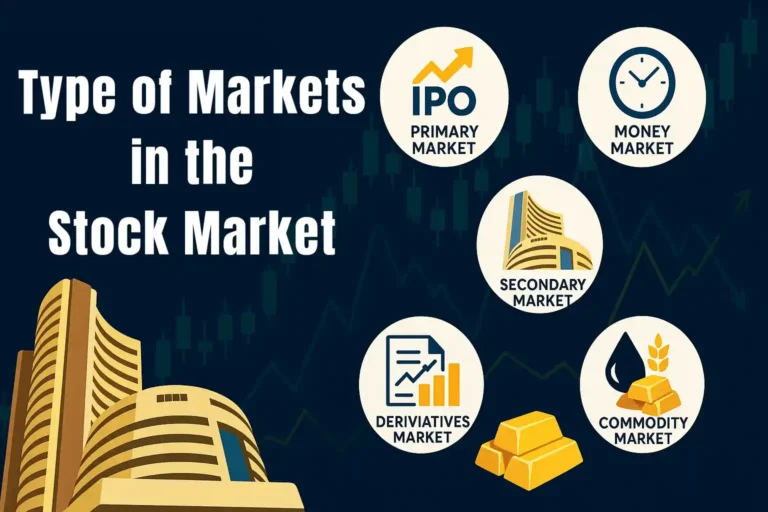In the stock market, there are different types of markets where people buy and sell stocks. Understanding these markets helps you know how trading works in India.
1. Primary Market
The primary market is where companies first sell their shares to the public. This is also known as the New Issue Market. When a company wants to raise money, it offers its shares for the first time through an Initial Public Offering (IPO). Investors can buy these shares directly from the company.
Key Points:
- Companies raise funds for growth.
- Investors can buy shares when they are first offered.
- After the IPO, the shares can be traded in the secondary market.
2. Secondary Market
The secondary market is where stocks are bought and sold after the IPO. This is the most common market where people trade stocks every day. In India, the National Stock Exchange (NSE) and Bombay Stock Exchange (BSE) are the main platforms for the secondary market.
Key Points:
- Investors trade shares among themselves.
- Prices are determined by supply and demand.
- Most trading happens in the secondary market.
3. Money Market
The money market is a place for short-term borrowing and lending of funds. This market is mainly for large institutions, such as banks, and not for individual stock traders. In India, the money market includes instruments like Treasury Bills, Commercial Papers, and Certificates of Deposit.
Key Points:
- Involves short-term financial instruments.
- Used by institutions to manage their short-term funding needs.
- It’s different from the stock market but is part of the overall financial system.
4. Derivatives Market
The derivatives market involves buying and selling contracts that derive their value from an underlying asset, such as stocks, commodities, or currencies. Futures and options are the main types of derivatives in India. These contracts allow traders to speculate on the price movement of assets without owning them directly.
Key Points:
- Traders don’t own the asset but trade contracts.
- Helps in hedging or speculating on prices.
- Can be risky for beginners.
5. Commodity Market
In the commodity market, people buy and sell physical goods like gold, oil, and agricultural products. In India, commodity trading is done on platforms like the Multi Commodity Exchange (MCX) and the National Commodity & Derivatives Exchange (NCDEX).
Key Points:
- Involves trading physical goods.
- Can include metals, energy products, and agricultural goods.
- A different market than stocks but important for price discovery.
Understanding these markets helps investors decide where and how they want to trade. Each market has its own purpose and risks, so it’s important to learn more before getting involved!

